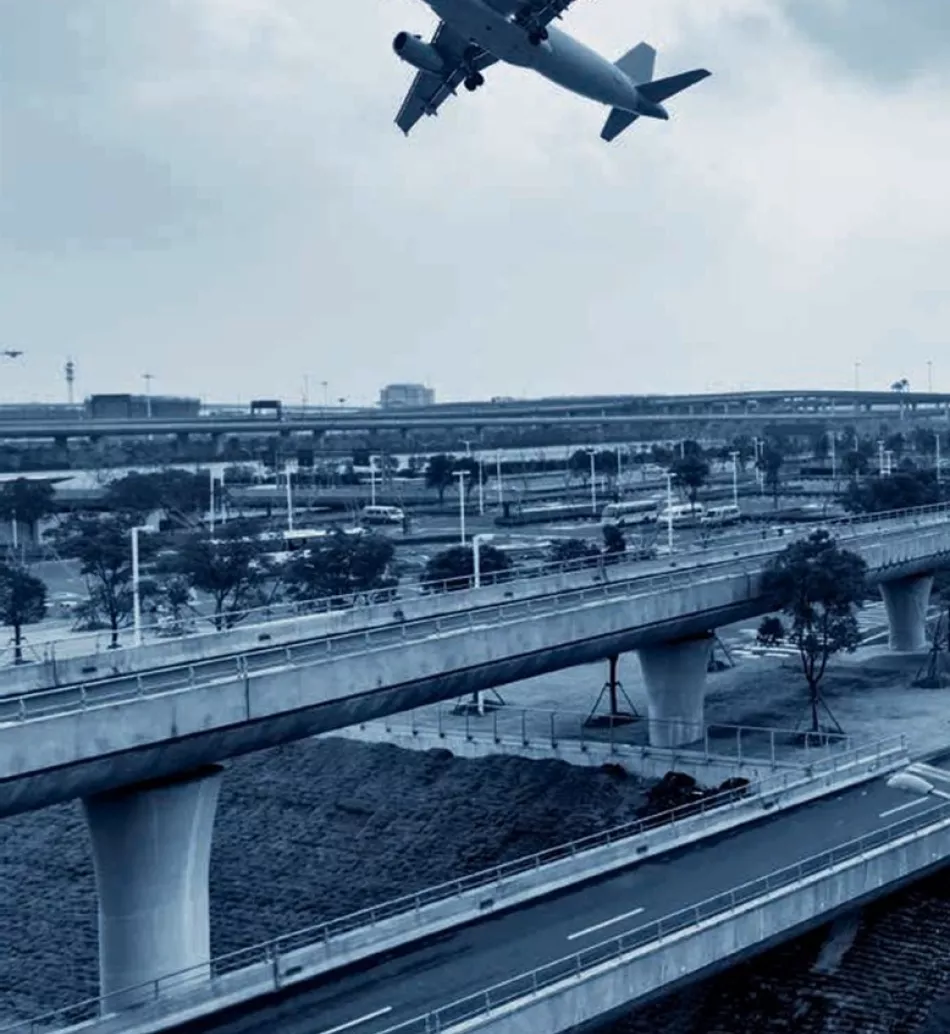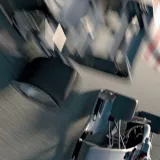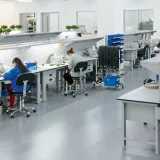A quiet battle for a quieter world

The quality of life and the health of millions of people are impacted by the noisy environment of modern cities.
Danish company Brüel and Kjær’s solutions help authorities and companies to keep control.
HIGH COMPLEXITY REQUIRES HIGH RELIABILITY
Brüel & Kjaer’s most advanced data acquisition systems are capable of capturing sounds or vibrations in high definition through more than 1000 different channels simultaneously. An example of such a system is used to monitor the conditions on passenger aircraft and may involve up to a thousand cables. With this high level of complexity comes the requirement for high reliability interconnects, as fault finding within this myriad of cables could take several days. To avoid such problems, the Danish company entrusted LEMO to supply the connectors.
Stress, sleeping disorders, tinnitus, cardiovascular or cognitive impairment: noise pollution can be a very real threat to people’s health. A British survey published in the European Heart Journal, has even proven, for the first time, the undeniable link between urban traffic noise and deaths and strokes.
There is an enormous risk: estimated by the World Health Organization, over half of the European Union’s population lives in areas that do not ensure acoustical comfort to its residents.
The awareness of the impact of noise on the quality of life and health has risen only lately, but its importance has been growing at a remarkable pace”, notes Alun Crewe, Brüel and Kjaer’s Vice President for Strategic Marketing This is particularly due to urban development: residential areas have grown closer to each other, encompassing even major sources of noise, such as airports.”
Noise is something that Brüel & Kjaer are fairly familar with: the company is the global leader in sound and vibration measurement solutions. They supply everything from transducers to data management. They are located in Naerum, a quiet little town in a green setting near Copenhagen. Their headquarters employing 450 of its global staff of 1250 is just a stone’s throw away from the garage where Per Brüel and Viggo Kjaer started the business in 1942.
The Danish company has been helping NASA test vibrations that their Mars landers are subjected to during launch; Ferrari find the best roar for their engines; Airbus design lighter and more resistant structures; Lockheed-Martin reduce the sonic signature of their fighter aircraft. However, 25% of their activities are now focused on environmental noise impact.
Regulations to measure and control noise impact are getting stronger and stronger, explains Alun Crewe. It has also become more difficult to comply with local authority requirements.” In the European Union, for instance, cities with a population of 250,000 or more have to implement a noise monitoring system. What systems should be installed, how to organize data recording and processing? This hasn’t been specifically set out.” This is where Brüel & Kjaer’s expert knowledge and solutions come into the picture.
It is a more complex mission than it seems to be and requires cutting-edge technology. Noise is in fact a chaotic concert composed of a multitude of sounds coming from everywhere. The noise under investigation has to be isolated, its quality evaluated, its intensity measured. Data need to be compiled, analysed and processed in real time and noise maps have to be sketched, often combining other factors (geography, weather). The hum of traffic is regularly present in debates over noise pollution, but it is often airports that create more tension.
Unsurprisingly, over 200 of them have been equipped with a remote noise monitoring system designed by the Danish company. The collected data are centralized in a “Noise office”. We combine them with radar observations and are able to tell in real time, whether there was a violation and if so, which aircraft was involved.” Measurements are often published directly on the web site available to the community living around the airport. In case of doubt, the public can have peace of mind within a short time. Transparency is also beneficial on the longer term: Communities that feel listened to and consulted tend to object less to airport development projects.”
These efficient, successful solutions, combining sensors, software and communication tools, can be transferred to other applications as well. We have developed a similar system for an application that we call “Noise Sentinel”. It’s intended for any large facility with the potential of producing a lot of noise that could impact local communities.” Noise sentinels have been deployed on construction sites – the noise and vibrations generated by urban building sites (e.g. subways) present a certain risk, especially for historical buildings. Noise sentinels often monitor infrastructures such as the Stade de France in Paris, hosting football match- es and concerts. They are used in ports as well, where they control the noise produced by vessels and by loading and discharging. Sometimes, they monitor mines, when they are located close to residential areas.
Brüel & Kjaer can actually implement their solutions wherever noise can become an issue for the communities” concludes Alun Crewe. The future of the battle against noise pollution will come about through solutions that seem to come from science fiction. Brüel & Kjaer’s engineers are ooking at integrating sound cancellation technologies in busy traffic-filled streets. Based on the principle of destructive interference, similar to the technology used in headsets: emission of a sound wave with an inverted phase of the ambient noise. Thanks to these solutions, maybe one day it will be possible to walk, sleep and live more healthy in overcrowded areas of Shanghai, Mumbai or New York.


